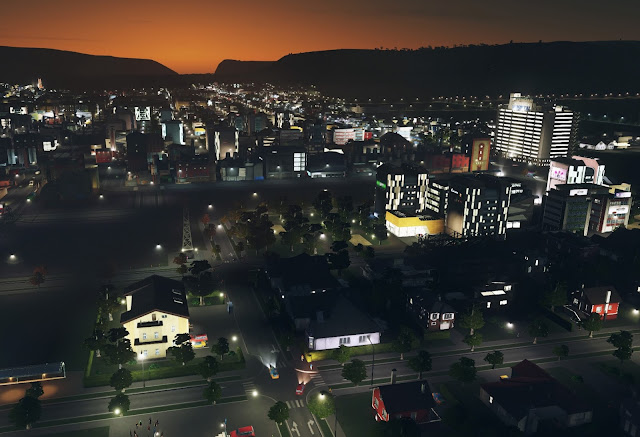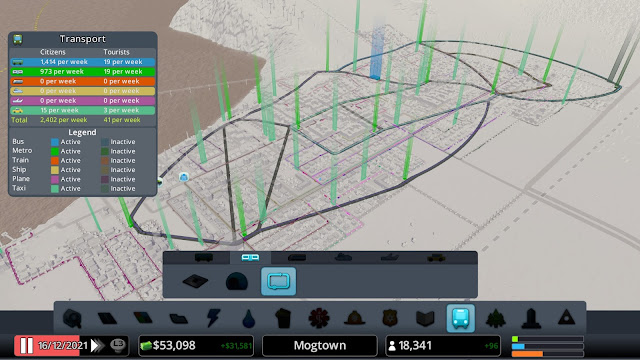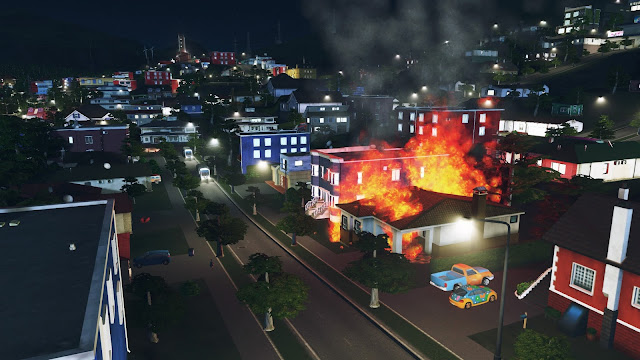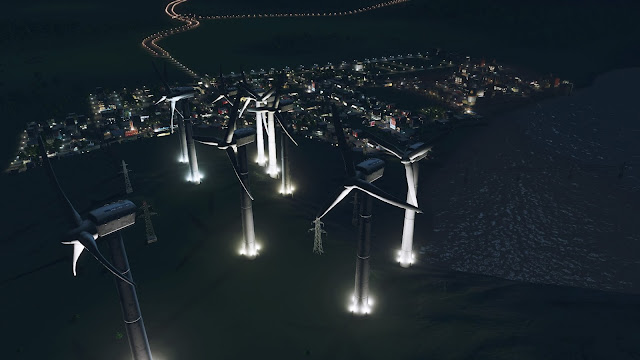Review by Matt S.
One of the few genres that I can get so utterly addicted to that I actually lose track of time, and don’t realise I’m getting tired until I look at the clock and it’s saying 5:00am, is the city builder. I had a powerful addiction to Sim City back in the day, and in the years since EA has managed to ruin that property, I’ve found myself quite enamoured to the likes of Tropico and, recently, Aven Colony.
Related reading: Also recently released on PS4 is Aven Colony; a city builder set in space. Matt’s review.
But now I’ve finally had the chance to play Cities: Skylines; a game that my PC would never run and, lacking an Xbox One, I’ve had to patiently wait to come to PlayStation 4. It was worth the wait. Dear Miku I love this game.
The basic formula will be familiar for anyone who has ever played a city builder before. By carefully managing residential, commercial, and industrial zones, the goal is to build a healthy, stable city where people live, work and play happily, and the city can grow from a village of a couple of dozen people to a thriving metropolis. There’s more to it than simply building roads and laying out zones for buildings, though. You also need to manage power supply, rubbish, pollution, education, entertainment, health care, fire prevention and police departments. You need to make sure citizens can access water while having waste pumped out in such a way that doesn’t lead to water-based health hazards.
You also need to manage transport networks, in the knowledge that if you rely too heavily on roads, traffic congestion will become a real problem and lead to a much less happy city. Then you also need to try to encourage tourism to your city, create opportunities for agriculture, and so on and so forth.
It’s a lot to manage and balance. It’s all straightforward and easy to understand – and the game’s tutorials at the start give you everything you need to know at first. But there is a lot to manage, and after a few hours, the competing demands on your time, and your city’s limited resources, starts to create very delicate balancing acts and you’ll start to need to make difficult decisions and compromises. In all this the game behaves much like the classical Sim City games, only far more detailed and intricate in how the systems build on one another. And really, that’s all I want in a city builder.
There’s a lot of room to play around with the kind of city that you believe is ideal, and Cities: Skylines deserves credit for not trying to force players down a particular approach to city design and management. Creating a high taxing city that provides its citizens with extensive services is an approach that other city builders in the past have actively ridiculed, but in Cities I’ve been able to do that and keep my citizens happy. It’s perhaps because I’ve been able to invest so heavily in education that they all understand the value of this economic model, and they’re too busy enjoying the city-wide network of free public transport and beach volleyball courts to care that they’re not able to screw one another over for personal gain.
If on the other hand you’re keen on the low taxing libertarian “paradise”… well, you can make that work too. Power to you.
Indeed, Cities: Skylines is the kind of game you can’t help but wish you could provide to your local politicians, complete with your save files, to show them how city design should be done. I’d love to be able to show my local state government what benefits Sydney would enjoy if it were to have public transport that actually worked, for example. Abstracted as its systems are, Cities: Skylines does go a good job in providing players with the abstracted realities of city planning, and having known someone who actually got into that after school as a result of his own addiction to Sim City, I find games like Cities to be very valuable, as much as educational resources as pieces of entertainment.
But it is very entertaining, too. There’s something so appealing about starting out with a bit of untouched land and then, a dozen hours of play later, looking down on a city glistening at night under all its lights. Cities allows you to pull the camera almost down to a street view of the city, and it’s all so photogenic. I must have taken 300 screenshots of my city to date. The visual effect is particularly impressive at daybreak and at night, when the downtown CBD looks like something right out of Tokyo, with bright signs and people milling around everywhere. I just wish it was possible to actually get down to a street-level view of the city and walk around.
The only area that the game loses some of its authenticity and believability is in the way it displays population numbers. By the time I had a city of 10,000 people, according to the game I needed no fewer than four high schools, a half dozen primary schools, and a university. The police, fire and health care needs were equivalent. I’ve lived in communities of 10,000 people in the past. They can’t possibly sustain that. The numbers become a little more believable when I add an imaginary “0” to the end of that “10,000”, but then that makes the numbers of families living in each house quite frightening in how overcrowded it would be. Mechanically it doesn’t matter, and of course a game that used real population numbers would be dry to the point of being dull, but for some reason it was something that really bugged me as I was playing.
Still, Cities Skylines is a ridiculously clever and enjoyable game, and one that I expect I will spend a lot of time playing down the track. EA looks like it will not be revitalising Sim City as a franchise anytime soon, so I’m so glad that another developer has stepped up to the plate and created the game that the last Sim City should have been… and I am so glad it’s finally on PlayStation 4.
– Matt S.
Editor-in-Chief
Find me on Twitter: @digitallydownld
 |
| Please Support Me On Patreon!
|











